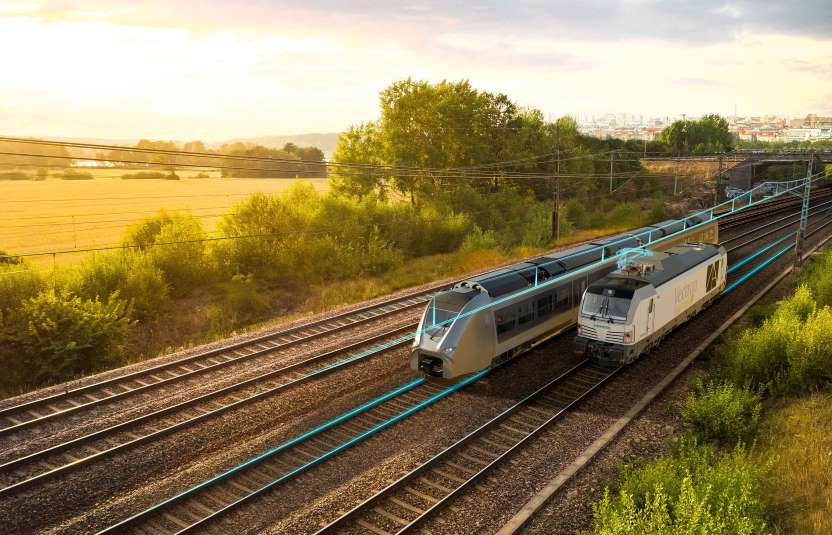Sunday, August 11, 2024
Reading Time: 3 minutes

China, known for its advancements in rail technology, has achieved a significant milestone by testing an ultra-high-speed (UHS) maglev train capable of reaching speeds up to 621 mph. This test, conducted in Yanggao County, Datong City, Shanxi Province, marks a major leap forward in China’s ongoing efforts to maintain its global leadership in high-speed rail systems. The new train, which employs magnetic levitation technology in a low-vacuum tube, has the potential to transform how people travel within China and across the world.
The Technology Behind the Speed
Developed through a collaboration between the China Aerospace Science and Industry Corporation Limited and Shanxi Province, the UHS maglev train utilizes cutting-edge technology that lifts the train above its tracks using magnetic forces, thereby eliminating friction. The train operates within a low-pressure environment, reducing air resistance and enabling it to reach speeds more than double that of the Shanghai Maglev, currently the fastest operational train globally with a top speed of 286 mph.
Successful Testing and Key Findings
During the recent demonstration, the maglev train performed as expected, achieving precise navigation, stability, and safe stopping mechanisms. Chinese media sources such as CGTN and Xinhua reported that the train’s speed and operational height adhered strictly to the planned parameters, with all systems functioning flawlessly. Additionally, the test confirmed the feasibility of maintaining a substantial vacuum within the tube, a critical factor in minimizing air resistance and achieving the unprecedented speeds.
Implications for China’s Infrastructure
The construction of this UHS maglev system commenced in April 2022, with the ambitious goal of integrating space technology with terrestrial transportation. The long-term vision involves using this system to connect major urban centers like Beijing and Shanghai, cutting down travel time between these cities to a mere 90 minutes. This would represent a revolutionary shift in domestic travel, offering a speed that outpaces most commercial aircraft.
A Historical Perspective on China’s Rail Development
China’s journey in maglev technology is not new. In 2021, the country introduced a high-temperature superconducting (HTS) maglev train in Chengdu, capable of reaching speeds of 385 mph. The continuous advancements in this domain highlight China’s commitment to pushing the boundaries of rail travel. The concept of using low-pressure tunnels for maglev trains draws parallels to the hyperloop technology popularized by Elon Musk. While Musk’s projects have encountered numerous obstacles, China’s recent success illustrates tangible progress in realizing the hyperloop vision.
Global and Domestic Impact
| China’s High-Speed Rail Network | Details |
|---|---|
| Start of Expansion | 2008 |
| Total Network Span | 25,000 miles |
| City Coverage | Connects 93% of cities with populations exceeding 500,000 |
| Foundation Period | The foundation was laid during the 2008 global financial crisis when China invested significantly in infrastructure to bolster its economy and create jobs. |
| Latest Development | The successful testing of the UHS maglev train marks the latest chapter in this ongoing narrative of innovation and economic growth. |
| Bullet Points | Details |
|---|---|
| Maglev Train Speed | The new maglev train can reach 621 mph, doubling the speed of the current fastest train. |
| Vacuum Tube Viability | Successful testing confirms the viability of maintaining a large vacuum in the tube, reducing air resistance. |
Comparisons and Potential for Global Adoption
The implications of China’s latest rail technology extend beyond its borders. As countries worldwide observe these developments, the potential for adopting similar systems grows. In the United States, efforts to establish high-speed rail networks, such as California’s project initiated in 2015, continue to progress. The UHS maglev train sets a new standard that could influence future infrastructure investments globally. Countries may begin exploring similar technologies to enhance their transportation networks, thereby reducing travel times and potentially shifting the dynamics of international travel.
Redefining Travel in the 21st Century
China’s successful testing of the ultra-high-speed maglev train not only solidifies its position as a leader in rail technology but also sets the stage for a future where travel is faster and more efficient than ever before. The ripple effects of this technological breakthrough could lead to a reimagining of global transportation networks, where high-speed trains rival airplanes in speed and convenience, offering travelers new possibilities and reshaping the landscape of international tourism and business travel.











